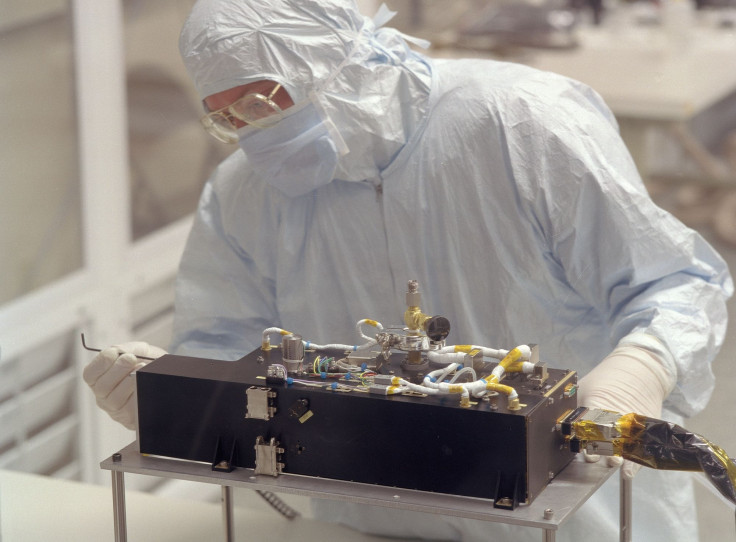Rosetta-Alice Spectrograph Maps A Comet’s Surface For First Time

NASA’s Alice ultraviolet, or UV, spectrograph aboard the European Space Agency’s Rosetta comet orbiter has obtained the first "far ultraviolet spectra" of a cometary surface, scientists announced Thursday. Rosetta, which is in orbit around the comet called 67P/Churyumov-Gerasimenko, is the first spacecraft to study a comet in such close proximity.
Alice, which began mapping the comet’s surface in August, provided data that helped the scientists determine that the comet is unusually dark at ultraviolet wavelengths and its surface has so far not revealed any large water-ice patches. According to astronomers, Alice has already detected both hydrogen and oxygen in the comet’s coma or atmosphere.
“We’re a bit surprised at both just how very unreflective the comet’s surface is, and what little evidence of exposed water-ice it shows,” Alan Stern, Alice principal investigator and an associate vice president at the Southwest Research Institute, or SwRI, in San Antonio, Texas, said in a statement.
According to scientists, Alice, developed by SwRI, is studying the origin, composition and workings of the comet by obtaining sensitive and high-resolution images that cannot be obtained by either ground-based or Earth-orbital observations. The UV wavelengths that Alice has observed contain significant information about the composition of the comet’s atmosphere as well as the properties of its surface.
“As the mission progresses, we will continue to search for surface ice patches and ultraviolet color and composition variations across the surface of the comet,” Lori Feaga of the University of Maryland said, in the statement.
Alice weighs nearly 9 pounds and consumes only 4 watts of power. SwRI has also developed an Alice-like instrument, which was launched aboard the New Horizons spacecraft to Pluto in January 2006 to study its atmosphere. The spacecraft is expected to reach Pluto in July 2015.
© Copyright IBTimes 2024. All rights reserved.












